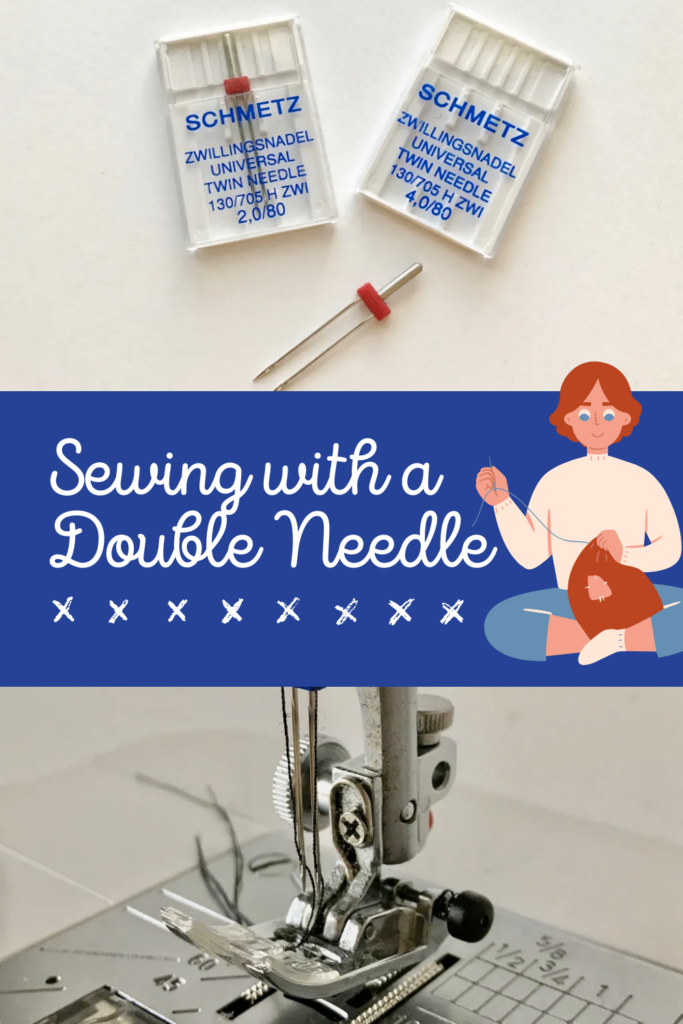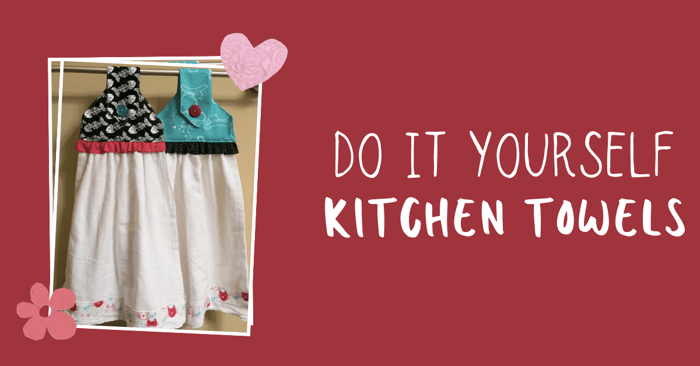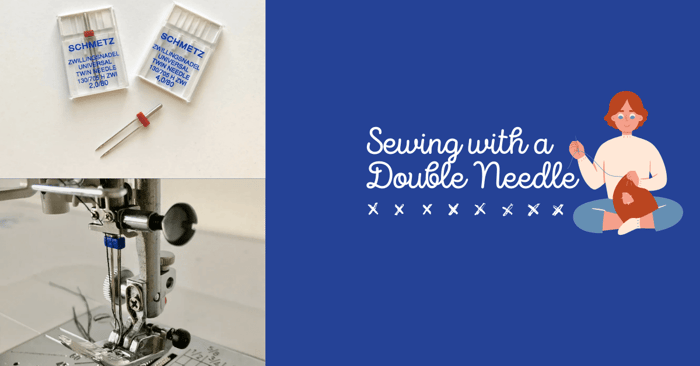
Sewing with a Double Needle: Mastering the Technique
Hey there! Jillayne from Hazelnut Handmade checking in again. Last month I shared three ways you can hem knits with a sewing machine. Today I’m going to expand on my favorite of those methods- sewing with a double needle. Double needle sewing is a technique that can take your sewing projects to the next level, making them look more professional and polished. But mastering this technique can seem daunting at first. In this blog post, we will guide you through everything you need to know about double needle sewing.
From understanding what double needles are and their purpose in sewing to selecting the right needle for your project, setting up your machine, and practicing the technique, we will cover it all. We will also delve into different stitches you can create with a double needle and provide troubleshooting tips for common issues that arise when using one. Safety measures while using a double needle will also be discussed. By the end of this post, you'll be ready to tackle any project with confidence using your newly acquired skills in double needle sewing!
Understanding Double Needles
A double needle is often called a twin needle. The names are pretty much interchangeable and I use both names pretty equally. It has two needles that come off one shaft so you can put it in your machine just like a regular needle and the two needles go up and down at the exact same time.
As I mentioned in my post last month, sewing with a double needle or twin needle sews two parallel stitches on the top of the fabric while the bobbin thread zig-zags between the stitches on the underside. From the top, it looks very similar to a coverstitch, without the extra machine.
The use of a double needle is to create professional-looking parallel lines of stitches, commonly for hemming and topstitching. Its ideal for sewing knit fabrics, as it allows for stretch stitches, saving time by creating two parallel lines of stitches simultaneously. Additionally, it adds a decorative touch to garments and can be used for heirloom sewing projects.
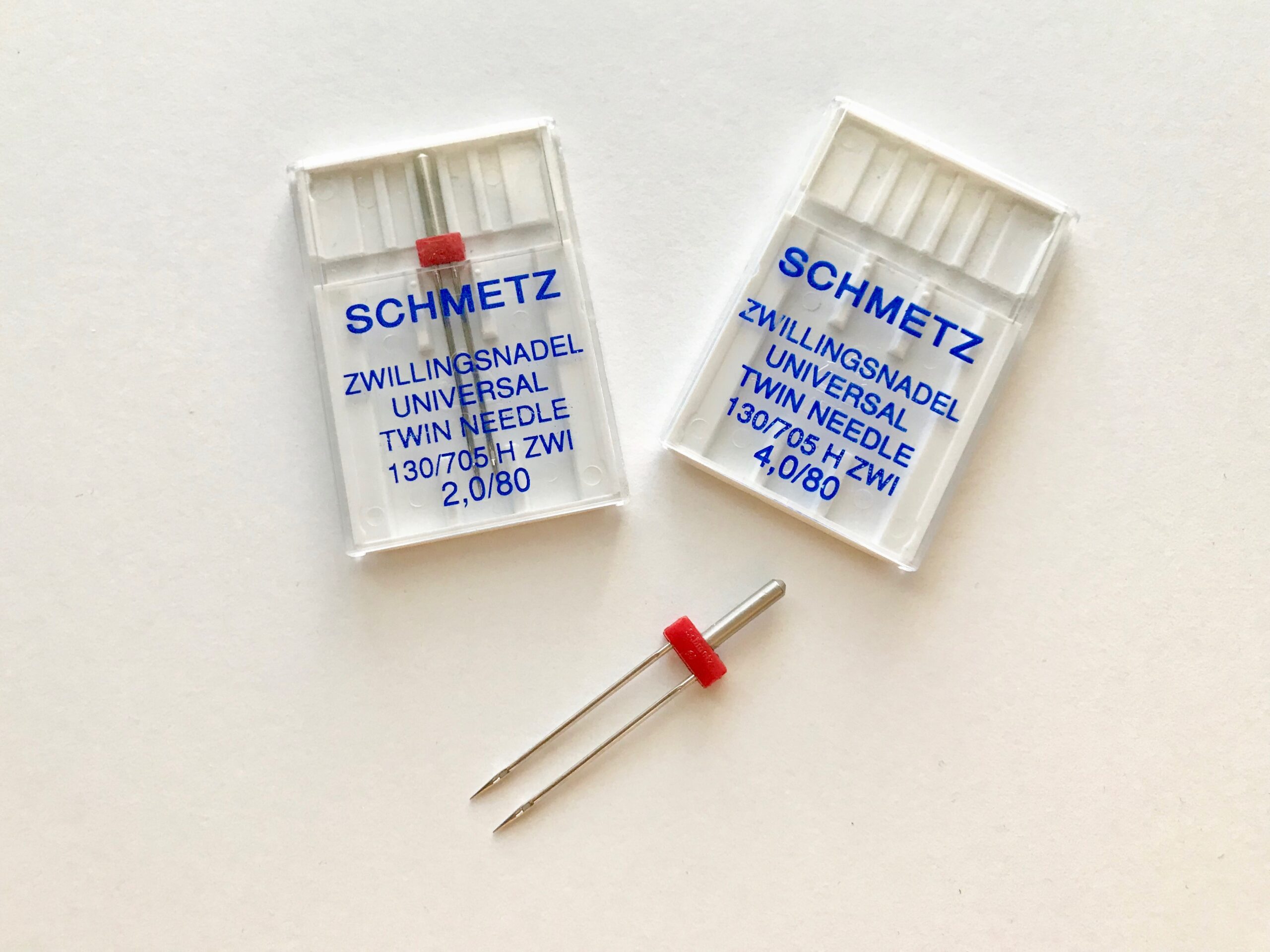
Sewing with a Double Needle: Types of Needles
Double needles come with different widths between the needles, needle thicknesses, and needle points. There are universal twin needles, jean twin needles, and ballpoint or stretch twin needles. When looking at a package of twin needles, there are two numbers at the bottom. The first refers to the distance between the two needles. The larger the number, the more distance between the two needles. Double needles vary in widths from 1.6mm to 6.0mm, catering to diverse sewing needs. They come in sizes like 2.0/80, 3.0/90, and 4.0/100 for different fabric weights. Ballpoint needles are for stretch fabrics, while hemstitch needles create decorative looks. Universal needles are versatile for general sewing.
The second number is how thick the actual needles are. I say the second number even though it’s really two numbers with a slash between because it’s actually one measurement written in two different ways. So just look at the number that looks similar to the regular needles you buy to determine what thickness you need. I always look at the right side of the slash. Like regular needles, the larger the number the thicker the needle. The thicker the needle the thicker the fabric.
Selecting the Right Double Needle for Your Project
When choosing a double needle, consider the fabric type, weight, and stretch for the right size and type. Use a ballpoint double needle for knit fabrics to prevent skipped stitches. Match needle size to fabric weight to avoid visible holes. Hemstitch double needles are perfect for decorative hems, while universal double needles offer versatility in sewing projects.
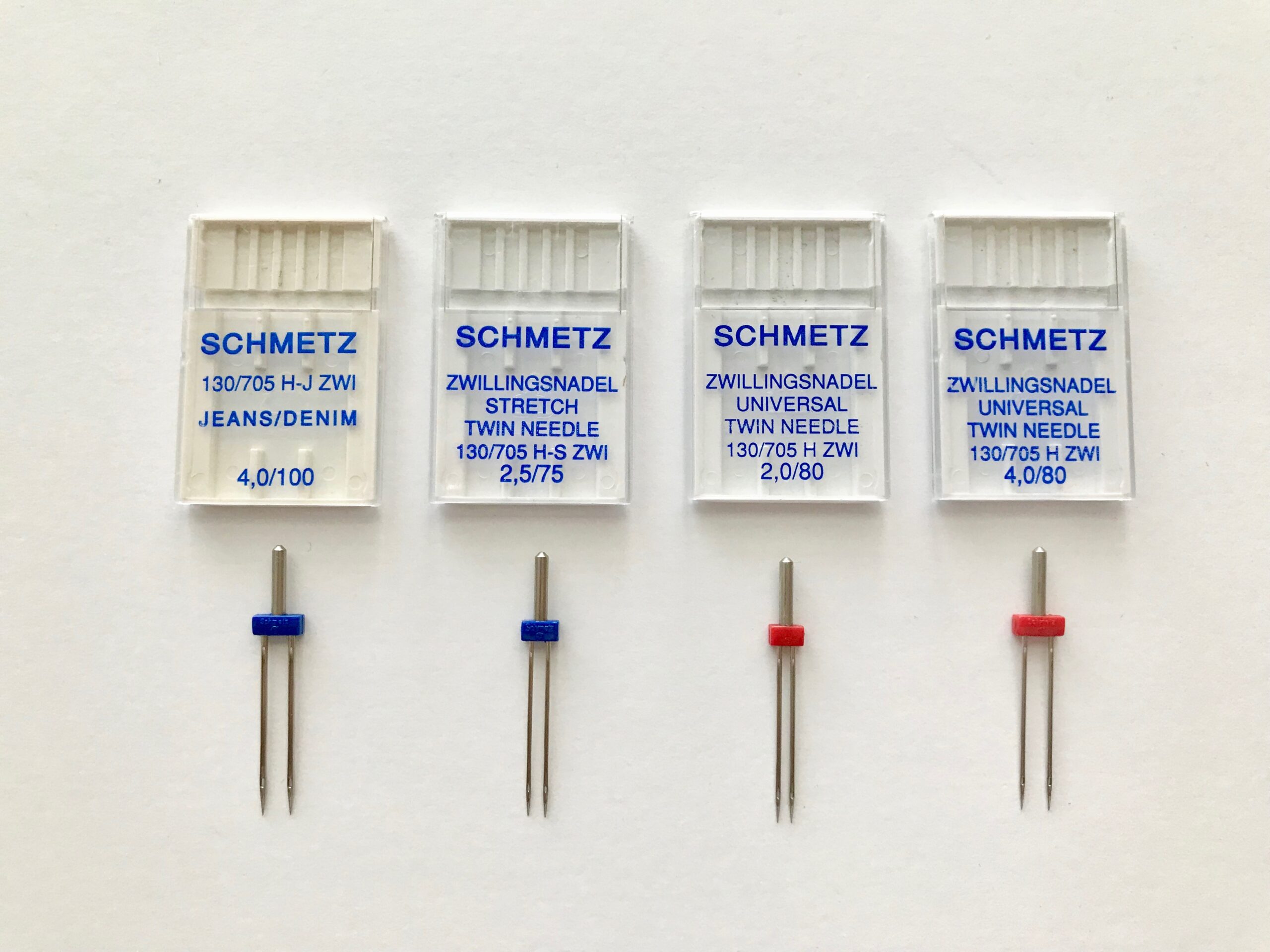
Preparing to Sew with a Double Needle
Sew with a Double Needle: Threading the Machine
Gather the necessary supplies, including a double needle, extra bobbin, spools of thread, fabric, and scissors. Ensure the sewing machine is compatible with double needles and the presser foot can accommodate the needle width.
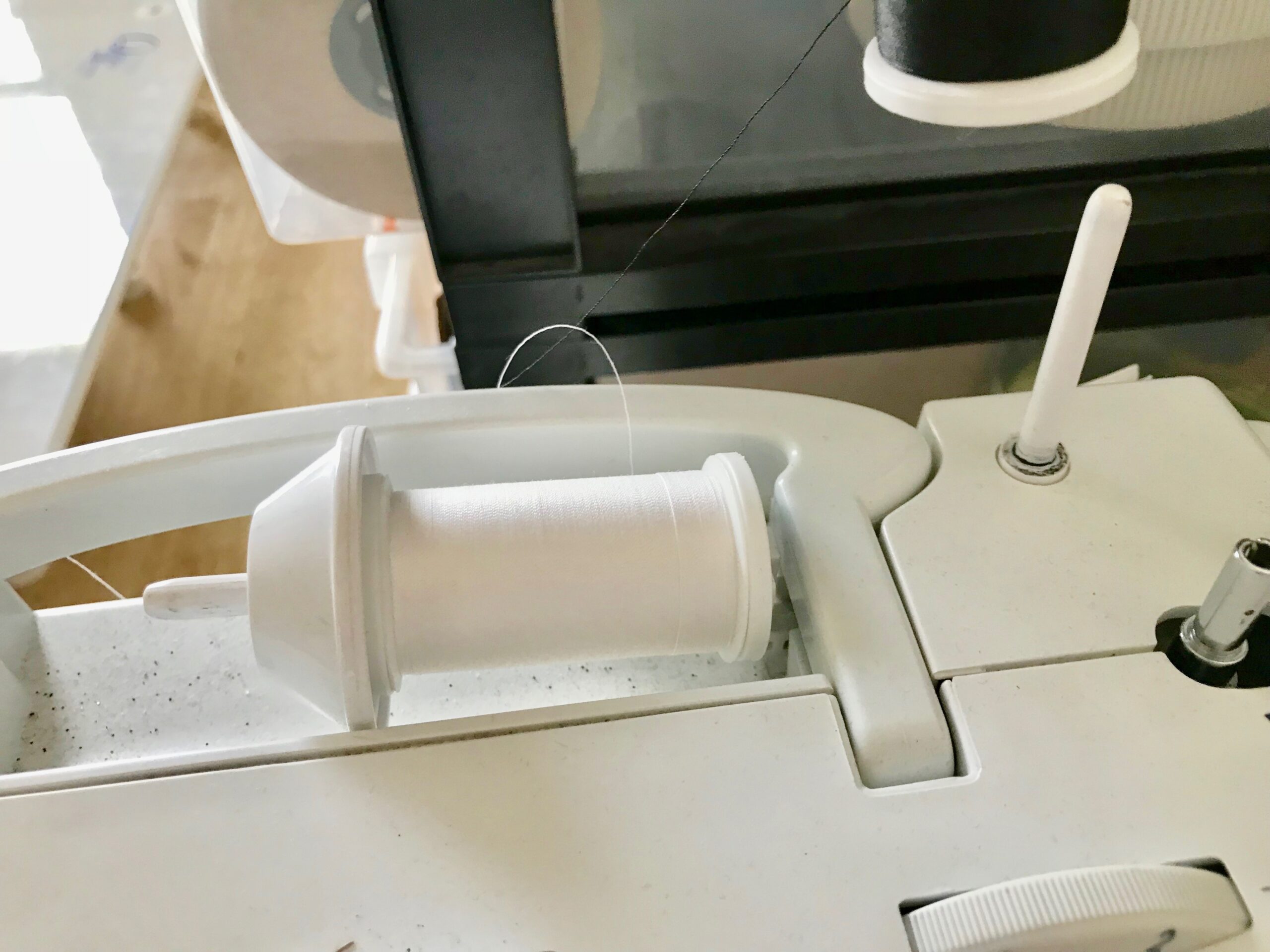
When sewing with a double needle, you’ll need two spools of thread (ideally in the same color) to thread your twin needle. Many machines have two places you can put your spools onto. If not, you can tape a kabob stick, thin chopstick, or thin wooden dowel to your machine to create your own second spool holder.
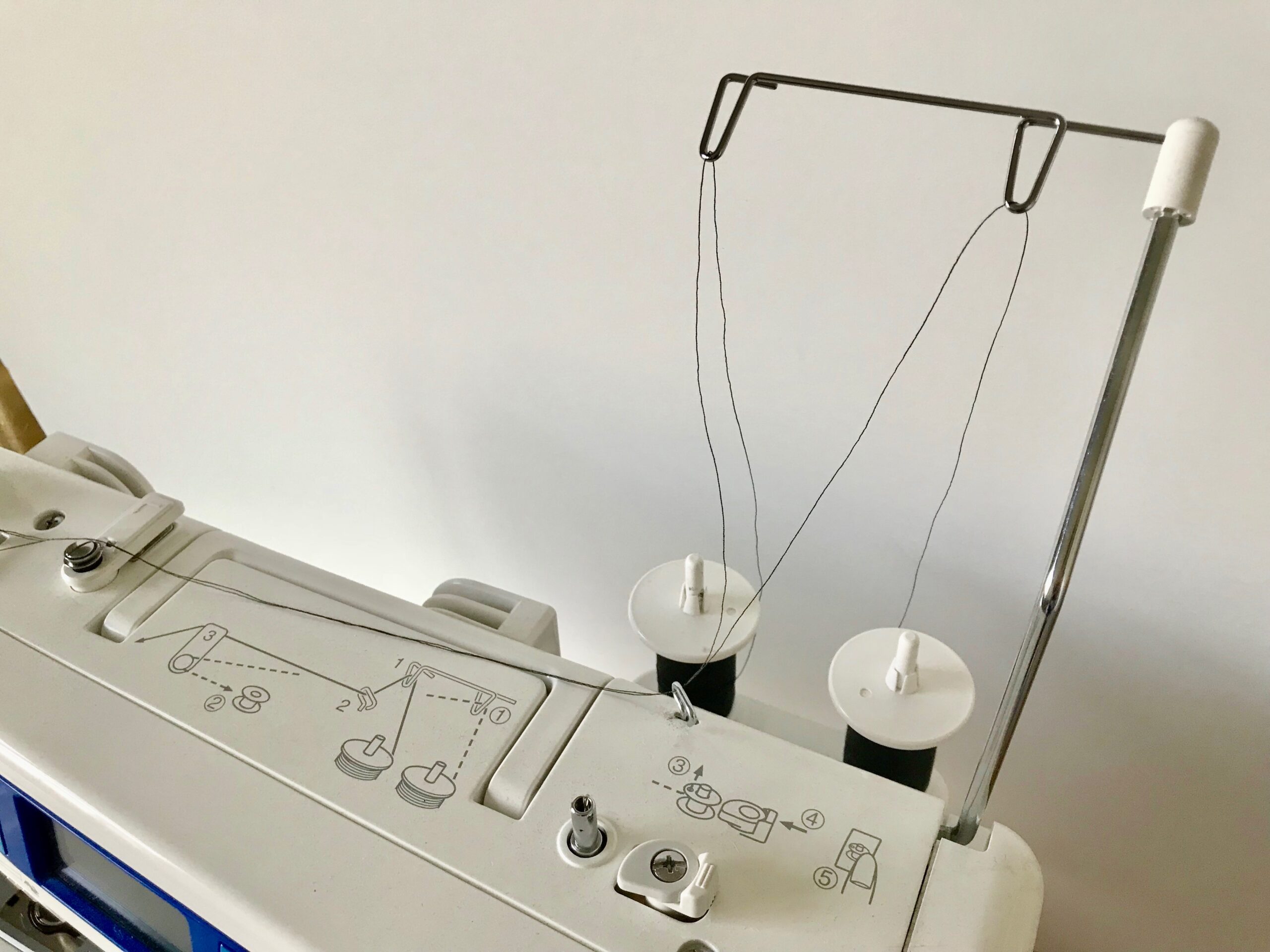
Place a spool of thread on each of your machine spool holders and get the thread ends from each spool and hold them together. Thread them through your machine as if they were one piece of thread. Once you get to the needle, you’ll separate them and thread one through each needle.
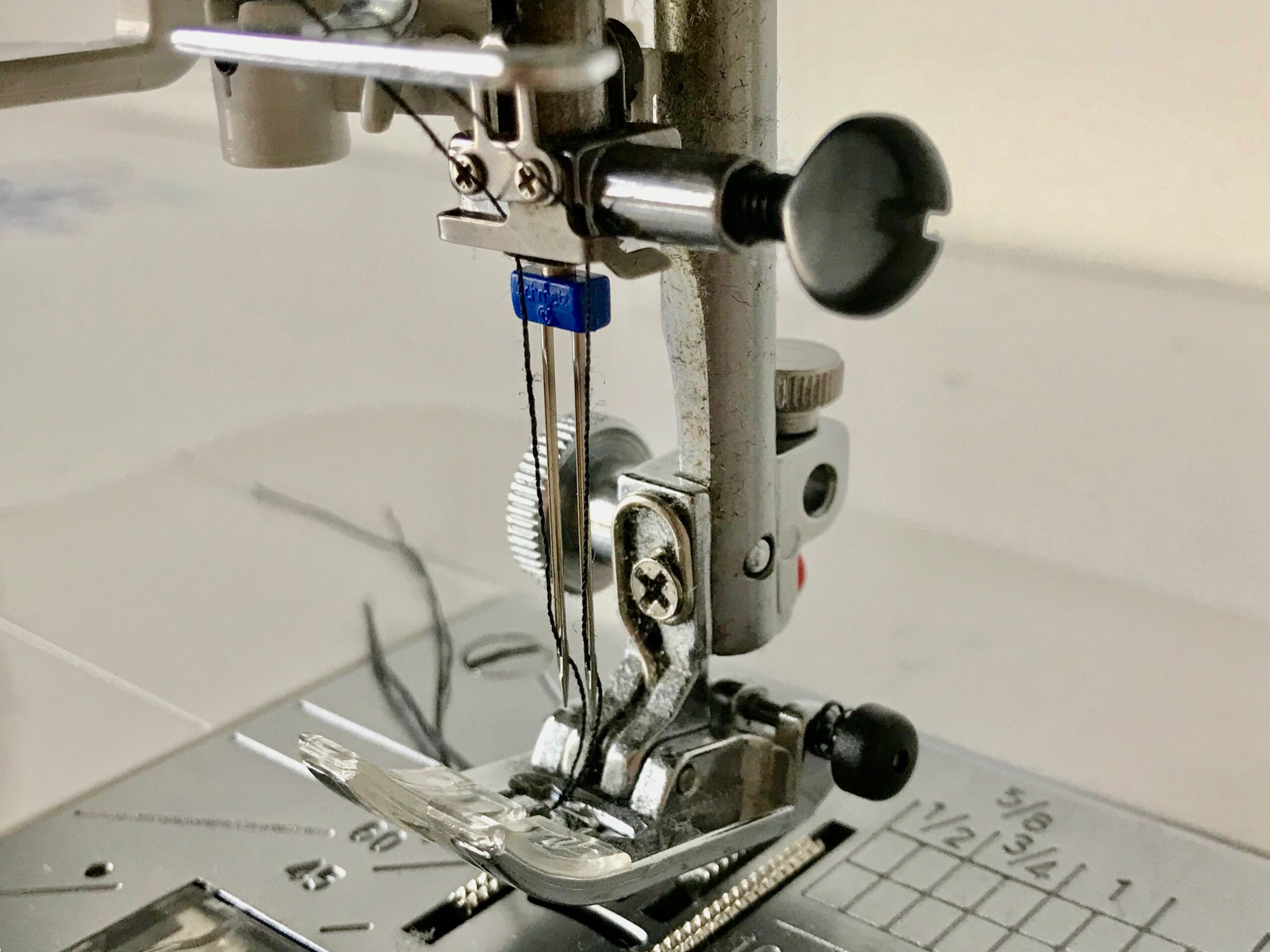
Setting Up Your Sewing Machine for Double Needle Sewing
Before starting the sewing project with a double needle, check the sewing machine manual for specific instructions. Ensure the needle plate has a wide enough hole and adjust the presser foot tension for smooth fabric feeding. Thread the machine following the specific path for double needle sewing. Check the needle position and stitch length before starting.
Sewing with a Double Needle | Start to Sew
Make sure your double needle is smaller than the openings in your sewing foot and needle plate and that you only do a straight stitch while you have your twin needle in. Because the double needle is wide, you will likely hit your foot or needle plate and break the double needle if you try to sew any kind of zig-zag or wide stitch. Start and end your stitching with a back tack just like you would with a single needle.
Make sure you have the right side of your garment facing up with you sew because that nice double line of stitching will only show on the tip side of what you sew. If you forget, you’ll probably end up seam ripping and nobody likes to do that…
Tips when Double Needle Stitching
Sometimes you’ll notice the bobbin thread that is zig-zagging on the underside is looking rather straight instead of zig-zagged. When that happens your stitch loses some of its stretchiness and will break more easily. It can also cause ‘tunneling’ where the fabric creates a little bump in-between the two straight stitches and makes it stick up a little.

If you have wooly nylon thread, use it in the bobbin for sewing knits. Wooly nylon looks like really thin yarn and has a small amount of stretch to it. It helps your stitches with the double needle be stretchy and give a little more than with regular thread.
Uses for the Twin Needle
I use my double needle mostly with knits for hems and topstitching places that need stretch, like necklines and waistbands. When I hem, I like to use a narrower twin needle because I find it cuts down on the tunneling. When I am topstitching necklines, I like to use a wide double needle. One of the reasons I topstitch my necklines is to keep the serging pushed towards the shirt and away from the neckline. And because I try to topstitch so one of my needles stitches in the ditch of the neckband, the wider needle width seems to keep the serging down better. But both of those are personal preferences and you can play with the double needle width to find what works for you.
Double needles are also helpful if you make Jeans or jean leggings like the Juniper jeggings. Jean thread often contrasts the denim and stands out a lot. Using a twin needle for parallel lines like at the back yoke and zipper fly makes those jeans look so professional!
Now there are no excuses! Slip that double needle into your machine and give it a try!
Different Stitches with a Double Needle
Experiment with a cover stitch machine for a professional finish on the wrong side of the fabric. Sew decorative stitches with the double needle, exploring the different stitch options on your machine. Master the straight stitch with the double needle, ensuring the stitches are aligned perfectly. Explore the stretch stitch with the double needle, ideal for sewing stretch fabrics.
Troubleshooting Tips for Double Needle Sewing
Dealing with common double needle sewing issues, like skipped stitches, and troubleshooting tunnelling problems is essential. Adjust upper thread tension and needle placement for skipped stitches, while different techniques can rectify tunnelling issues and ensure flat stitches. Also, pay attention to any bobbin tension glitches that may impact the results of double needle sewing.
Taking Your Double Needle Sewing to the Next Level
Learn new sewing patterns ideal for a double needle, experiment with different widths for twin needle stitching, and explore decorative stitch options. Master tension adjustments and effortlessly hem knit fabrics for professional results. Enhance your sewing expertise by incorporating these techniques into your repertoire, taking your double needle sewing to the next level.
What's your favorite project to sew with a double needle?
Some of my favorite projects to sew with a double needle include hemming t-shirts, creating decorative topstitching on garments, and adding professional finishing touches to stretch fabrics. The double needle allows for neat and even stitching, giving my projects a polished look. What about you?
Conclusion
To truly elevate your sewing projects, mastering the technique of sewing with a double needle is a game-changer. For best results, follow the tips and tricks in this article. Sewing with a double needle is a good way to up your sewing game with knit fabric when you don't have more advanced sewing machines - like a coverstitch.
Thank you for joining us today. Before you leave, make sure to join our Facebook Group and follow us on Instagram. Happy Sewing!
